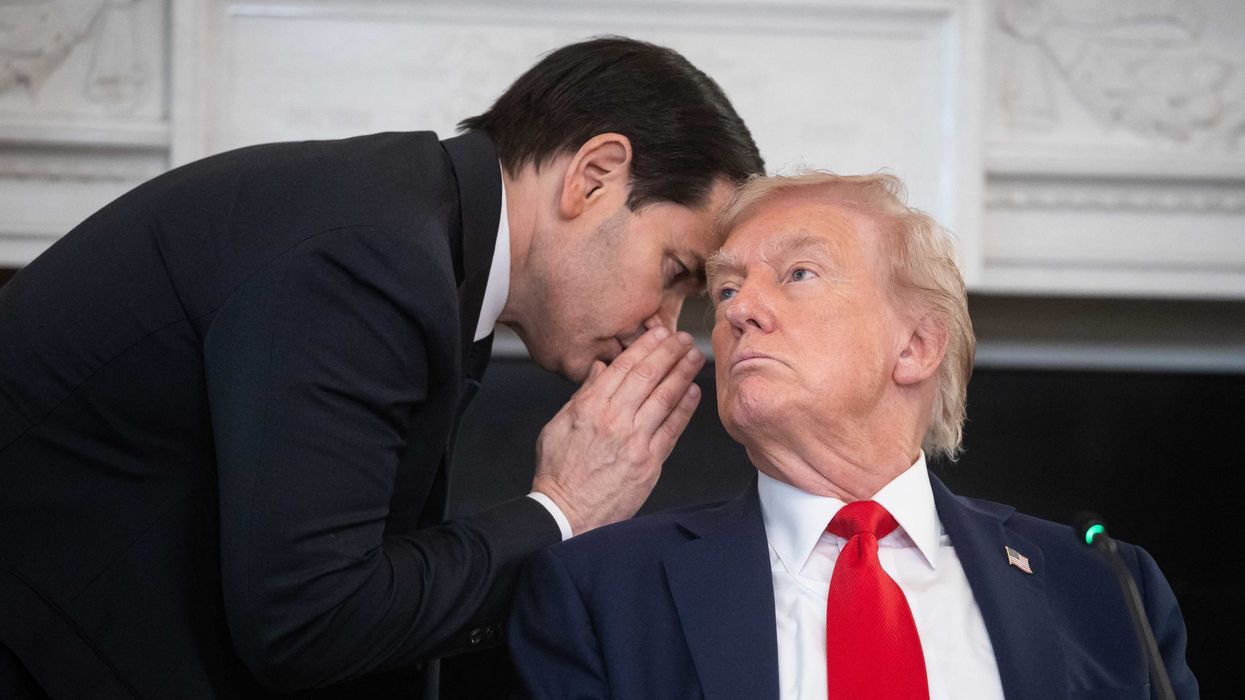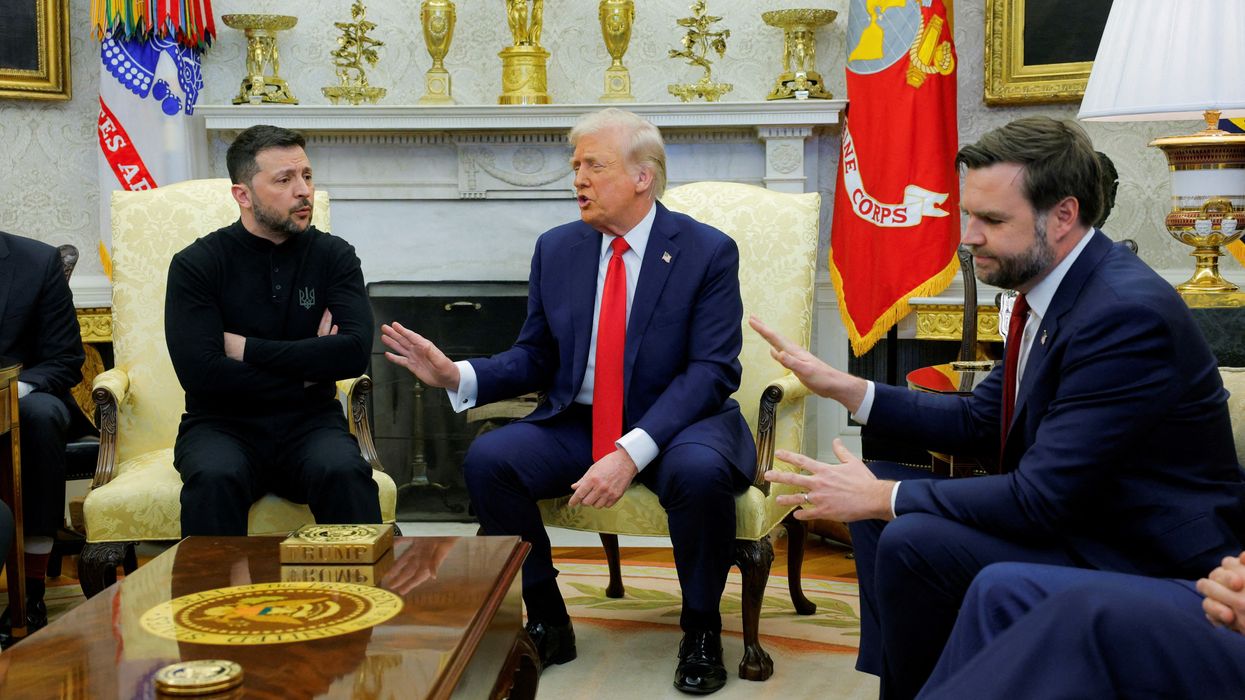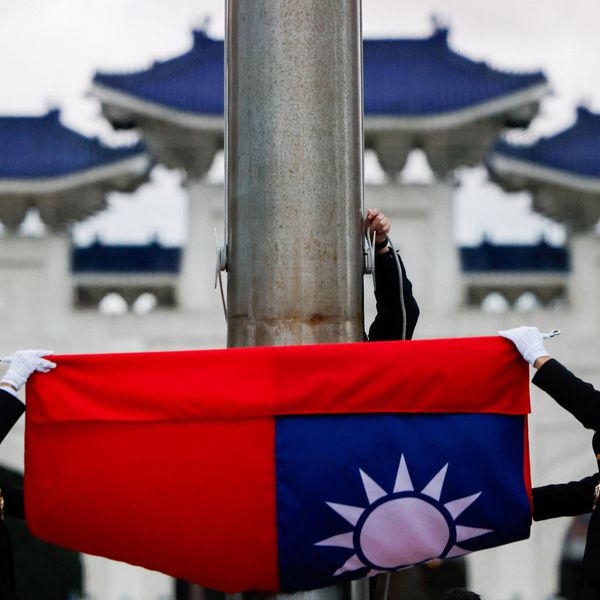George F. Kennan has contradictory claims to historical fame. Lauded in the 1940s as the architect of the policy to contain Soviet expansionism by the adroit deployment of countervailing power, in the 1950s he became the foremost advocate of détente with Russia. Then, after the USSR’s collapse in 1991, Kennan became a persistent critic of NATO expansion to Russia’s borders, calling it the “the greatest mistake of the entire post-Cold War period.”
Scholars have long been intrigued by Kennan’s about-face and the story of his journey from Cold War hawk to dovish peacemaker may provide lessons for contemporary American-Russian relations. Kennan was a Russophile who hated Soviet communism and his relatively benign view of the Kremlin’s foreign policy was counter-balanced by a highly negative view of its domestic regime.
The clue to Kennan’s radical policy shift was hidden in plain sight in his famous 1947 “X” article on “The Sources of Soviet Conduct.” In that then-anonymously published piece in Foreign Affairs, Kennan, who had recently served in the U.S. Embassy in Moscow, warned that strategic containment had “nothing to do with outward histrionics, with threats or blustering or superficial gestures towards toughness.”
The Soviet Union was an ideological state committed to spreading communism, Kennan noted, but it was also a great power with its own interests and sensibilities. Soviet leaders were not beyond considerations of prestige and, as with leaders of other great nations, they should be allowed to save face.
Kennan was irked by the militarization of his concept of containment through the formation of NATO in 1949 and the rearming of West Germany in the 1950s. Western leaders didn’t seem to be able to grasp how their actions impacted on Soviet behavior or respect that Soviet leaders, too, had their own fears and threat perceptions.
Appointed Ambassador to the Soviet Union in 1952, Kennan cabled the State Department from Moscow that “if one were able to strip away…propagandistic distortion and maligning of foreign intentions, one would find that there remained a certain hard core of genuine belief in the sinisterness of western intentions.”
During the earlier post-war years, Kennan had advocated dividing Germany as part of a broader division of Europe into Soviet and Western spheres of influence. This was commensurate with the X article’s view that in dealings with the Soviets the logic of force should prevail over the logic of reason.
But by the late 1940s Kennan had changed his mind. He then favored a deal with the Soviets that would lead to the reunification of Germany on the basis of its unarmed neutrality. Kennan had come to fear that a divided Germany would harden the division of Europe and thereby solidify the communist grip on Eastern Europe. Rather, mutual withdrawal from Germany could lead to further Soviet military and political disengagement from East-Central Europe. The logic underlying Kennan’s new position was that of reason — the Soviets could be rationally induced into changing their behavior by making them feel more secure.
We now know from Soviet archives that the Kremlin’s priorities were broadly the same as Kennan’s — to stop the militarization of the Cold War by preventing the division of Germany and Western Germany’s rearmament and integration into the American-led western bloc. To achieve these goals, the Soviets were prepared to pay a high price, including military and political withdrawal from East Germany.
Kennan’s reaction to the Soviet diplomatic notes of 1952 proposing German reunification in return for the country’s permanent neutrality was very different from that of most western politicians and diplomats. As he recounted in his diary, he had hoped the Soviet initiative would lead to a softening of the west’s hardline posture but his colleagues remained adamantly opposed to any such deal.
A perplexed Kennan observed that he wasn’t sure what would worry him most — the fact that both sides believed their own propaganda, or the fact that they didn’t.
After leaving the State Department in 1953, Kennan opposed the so-called liberation strategy of President Eisenhower’s Secretary of State, John Foster Dulles, arguing instead that the communist bloc would only change as a result of internal processes, not through the force of external threats or intrigues. Liberationist rhetoric would merely serve to entrench Soviet hardliners. “We must be gardeners and not mechanics in our approach to world affairs,” urged Kennan in his lectures on “The Realities of American Foreign Policy” at Princeton in 1954.
In his 1957 Reith Lectures for the BBC, Kennan revived the idea of an agreed settlement of the German question and pushed back against those who argued the Soviets had no real interest in Germany’s reunification. That might be true, he told his British audience, but “until we stop pushing the Kremlin against a closed door, we shall never learn whether it would be prepared to go through an open one.”
Both Kennan and his critics had a point. The Soviets had campaigned hard and authentically for pan-European collective security and a German peace treaty in 1954-1955 but then abandoned that policy in the face of western intransigence. By 1957 the Kremlin’s priority was holding on to the communist position in Eastern Germany as a counter to West Germany’s admission to NATO.
Kennan was disappointed by the negative U.S. reaction to his Reith lectures, gloomily noting in his diary: “The die is now cast. There will be no European settlement. The arms race will go uncontrollably ahead. These people will have their war…What will remain of our world when it is all over is beyond human reckoning.”
Earlier, in March 1950, Kennan had published an article in Reader’s Digest entitled “Is War with Russia Inevitable?” Russia did not want war, wrote Kennan, because Soviet leaders believed capitalism would collapse of its own internal contradictions. In other words, the Soviets believed in promoting communism, not imposing it by force of arms.
Kennan was very disturbed by the McCarthyite purges of the early 1950s and expressed his concerns in a number of articles, letters, speeches, and commencement addresses, emphasising that the fanatical modes of argument and sweeping hostile actions of the anti-communist crusade were precisely the ones that allowed the Soviet Union its wish to discredit the American political system.
Initially, Kennan resisted the idea that Stalin’s death in 1953 augured fundamental change in the Soviet Union. In a July 1953 review of Isaac Deutscher’s book “Russia: What Next?” he challenged Deutscher’s argument that Soviet leaders were post-Stalin reformers. Rather, they were zealots, said Kennan, beholden to the state power they had seized in 1917. It was the compulsion to hold on to power that explained the repression and terror of the communist system.
In the Reith Lectures the jury was still out for Kennan on the post-Stalin transition in the Soviet Union. “The Soviet leaders stand here at a parting of the ways,” said Kennan, “either they keep up with the times and change the system or they relapse into the rigidities of Stalinism.” He later came to appreciate that Soviet domestic actions were shaped by their reactions to the external, international environment as well as by the internal dynamics of the communist system.
A realist as well as an idealist, Kennan was fond of quoting John Quincy Adams’s aphorism that America “goes not abroad, in search of monsters to destroy.” It was through example that America should lead the world, argued Kennan on innumerable occasions. He believed the United States would win the Cold War simply by being true to its liberal, democratic self. Attempts to forcibly refashion the world in its own image only served to undermine America’s fundamental values and beliefs.
Kennan’s Russian policy odyssey showed how even the sharpest-beaked hawks could become dove-like peacemakers if they took the trouble, as he did, to recognize how different the world looks through the eyes of their rivals and adversaries.
















